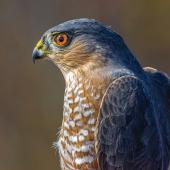Parroting Predators
Montana raptors play copycat.
In 1978, there were 12 known breeding pairs of bald eagles in Montana. Over the next 34 years, thanks to extensive national recovery efforts, the nesting population steadily increased.
In 1995, bald eagles were down-listed from “Endangered” to “Threatened”, and on June 28, 2007 the Interior Department officially declared the bald eagle fully recovered.
Now, the Montana population is up to over 700 nesting pairs. Iconic as bald eagles may be, juvenile specimens are often confused with another impressive raptor, the golden eagle.
So, what’s the difference?
Latin Name
Bald Eagle: Haliaeetus leucocephalus
Golden Eagle: Aquila chrysaetos
Plumage
Adult Bald Eagle: Bright white head and neck.
Juvenile Bald Eagle: Dark brown overall—it takes five years to obtain the full white-head-and-neck plumage.
Adult Golden Eagle: Also dark brown, but goldens have plumage around their legs, and balds don’t.
Juvenile Golden Eagle: White patches on their wings and white at the base of the tail feathers.
Habitat
Bald Eagle: Live and nest along rivers and lakes. Nests might be used year after year, resulting in huge constructions, sometimes up to 12 feet in height and eight feet in diameter. Balds prefer tall trees in large stands, typically cottonwood or conifer.
Golden Eagle: Not a water bird; typically found in open grasslands. Goldens prefer to nest on bluffs and cliff edges, but also in large trees and on badland pillars.
Flying Style
Bald Eagle: Neck extends to half the length of the tail.
Golden Eagle: Considerably less.
Wing-Span
Juvenile Bald Eagle: 5-7 feet.
Adult Bald Eagle: 6-7 feet.
Adult Golden Eagle: 5-7 feet.
Claire Gower is an FWP nongame biologist based in Bozeman.













